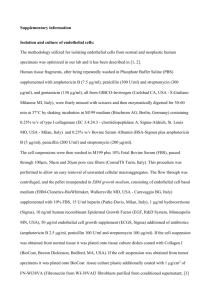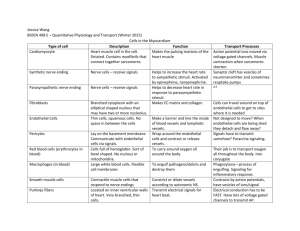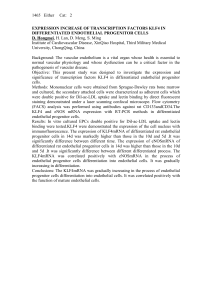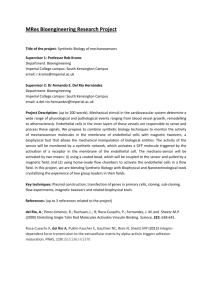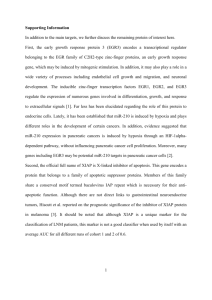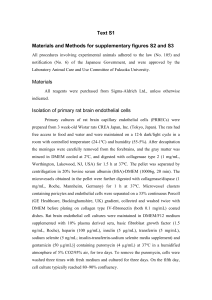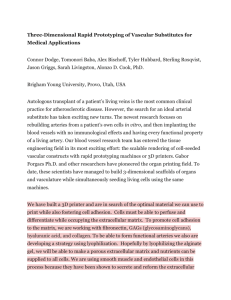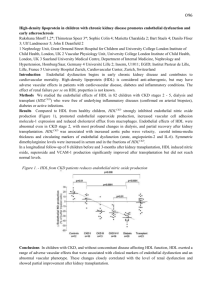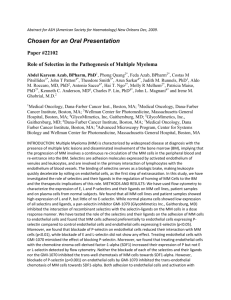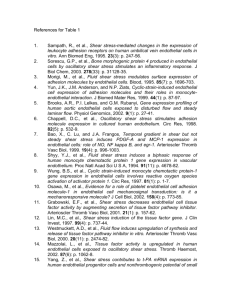MRes Bioengineering research project (new)
advertisement
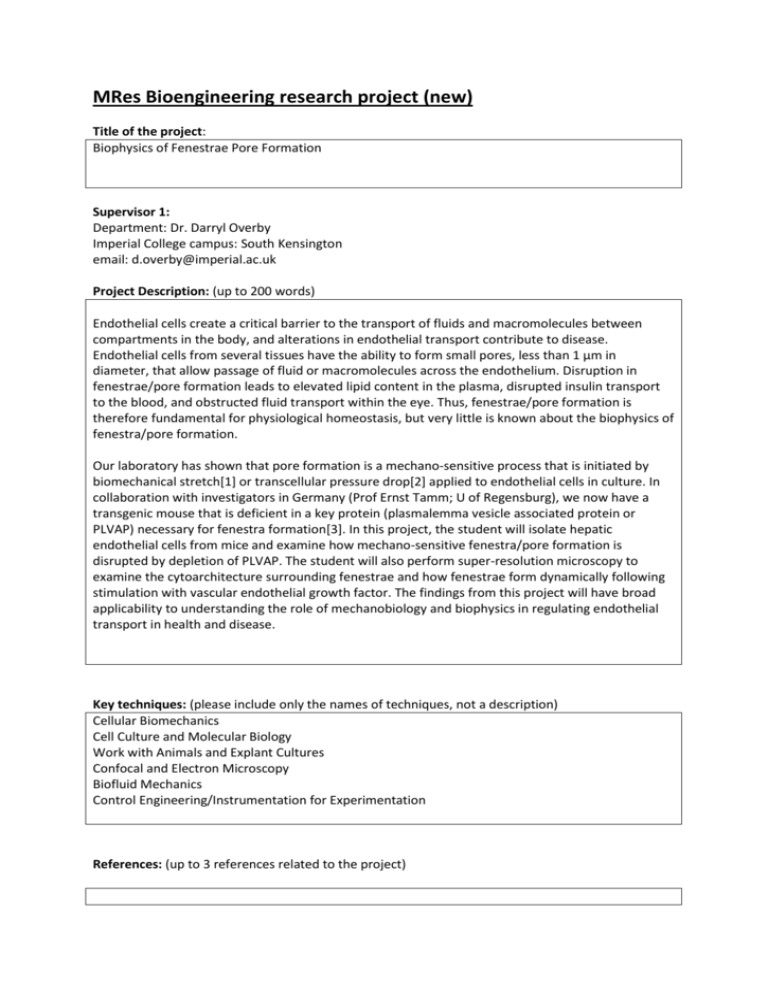
MRes Bioengineering research project (new) Title of the project: Biophysics of Fenestrae Pore Formation Supervisor 1: Department: Dr. Darryl Overby Imperial College campus: South Kensington email: d.overby@imperial.ac.uk Project Description: (up to 200 words) Endothelial cells create a critical barrier to the transport of fluids and macromolecules between compartments in the body, and alterations in endothelial transport contribute to disease. Endothelial cells from several tissues have the ability to form small pores, less than 1 µm in diameter, that allow passage of fluid or macromolecules across the endothelium. Disruption in fenestrae/pore formation leads to elevated lipid content in the plasma, disrupted insulin transport to the blood, and obstructed fluid transport within the eye. Thus, fenestrae/pore formation is therefore fundamental for physiological homeostasis, but very little is known about the biophysics of fenestra/pore formation. Our laboratory has shown that pore formation is a mechano-sensitive process that is initiated by biomechanical stretch[1] or transcellular pressure drop[2] applied to endothelial cells in culture. In collaboration with investigators in Germany (Prof Ernst Tamm; U of Regensburg), we now have a transgenic mouse that is deficient in a key protein (plasmalemma vesicle associated protein or PLVAP) necessary for fenestra formation[3]. In this project, the student will isolate hepatic endothelial cells from mice and examine how mechano-sensitive fenestra/pore formation is disrupted by depletion of PLVAP. The student will also perform super-resolution microscopy to examine the cytoarchitecture surrounding fenestrae and how fenestrae form dynamically following stimulation with vascular endothelial growth factor. The findings from this project will have broad applicability to understanding the role of mechanobiology and biophysics in regulating endothelial transport in health and disease. Key techniques: (please include only the names of techniques, not a description) Cellular Biomechanics Cell Culture and Molecular Biology Work with Animals and Explant Cultures Confocal and Electron Microscopy Biofluid Mechanics Control Engineering/Instrumentation for Experimentation References: (up to 3 references related to the project) 1. Braakman ST, Pedrigi RM, Read AT, et al. Biomechanical strain as a trigger for pore formation in Schlemm's canal endothelial cells. Exp Eye Res. 2014;127(C):224–235. doi:10.1016/j.exer.2014.08.003. 2. Overby DR, Zhou EH, Vargas-Pinto R, et al. Altered mechanobiology of Schlemm's canal endothelial cells in glaucoma. Proceedings of the National Academy of Sciences. 2014;111(38):13876–13881. doi:10.1073/pnas.1410602111. 3. Herrnberger L, Seitz R, Kuespert S, Bösl MR, Fuchshofer R, Tamm ER. Lack of endothelial diaphragms in fenestrae and caveolae of mutant Plvap-deficient mice. Histochem Cell Biol. 2012;138(5):709–724. doi:10.1007/s00418-012-0987-3.
